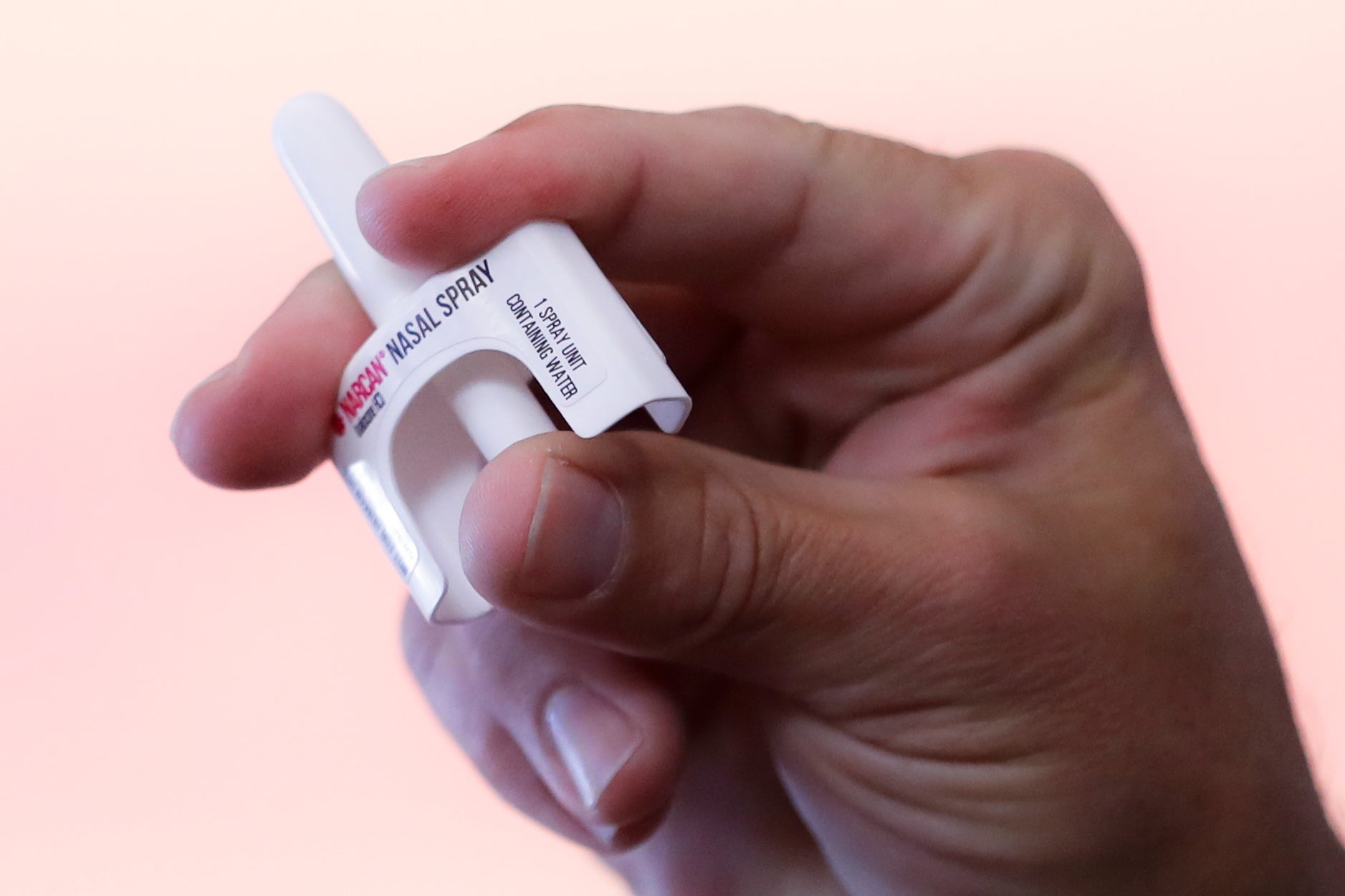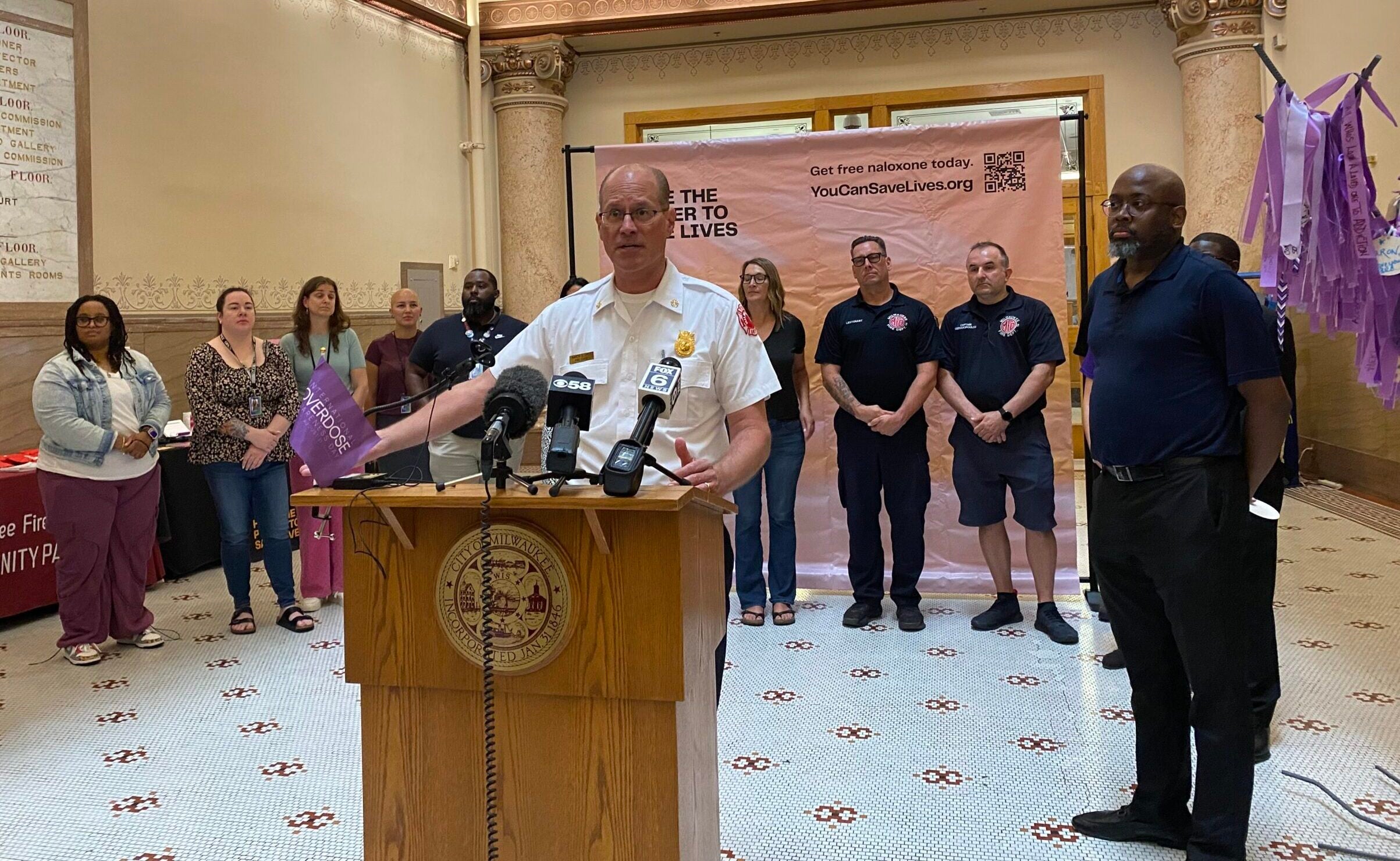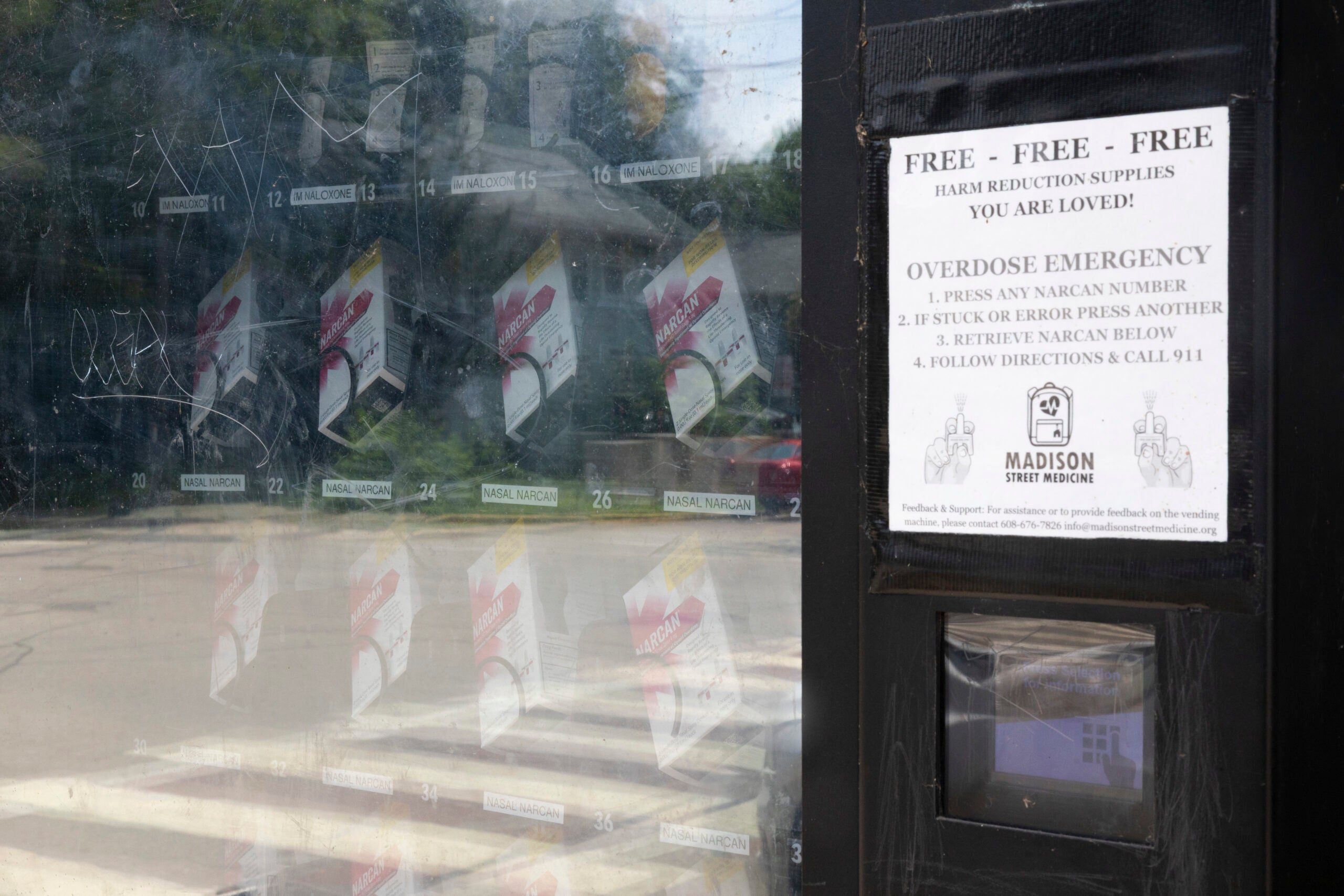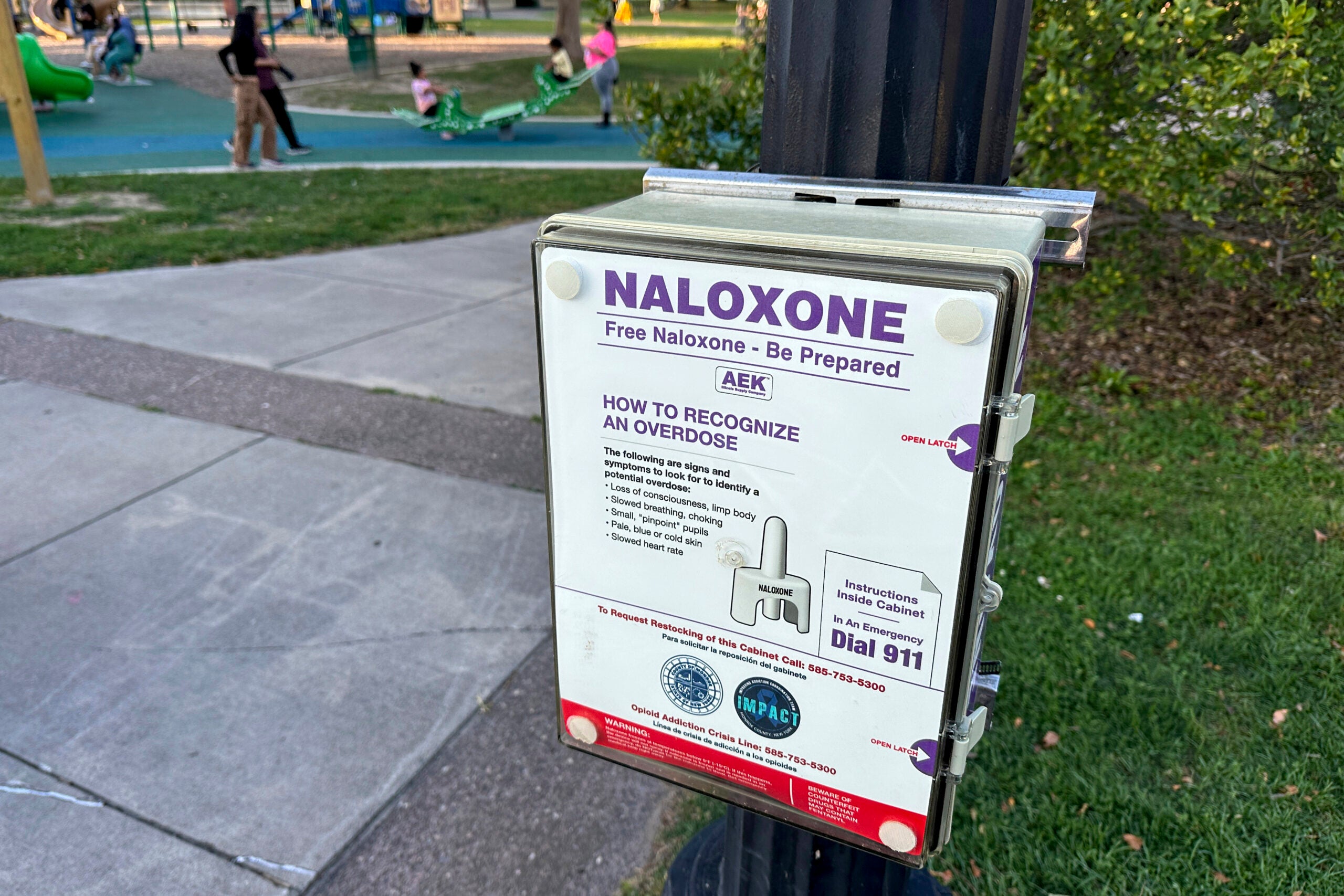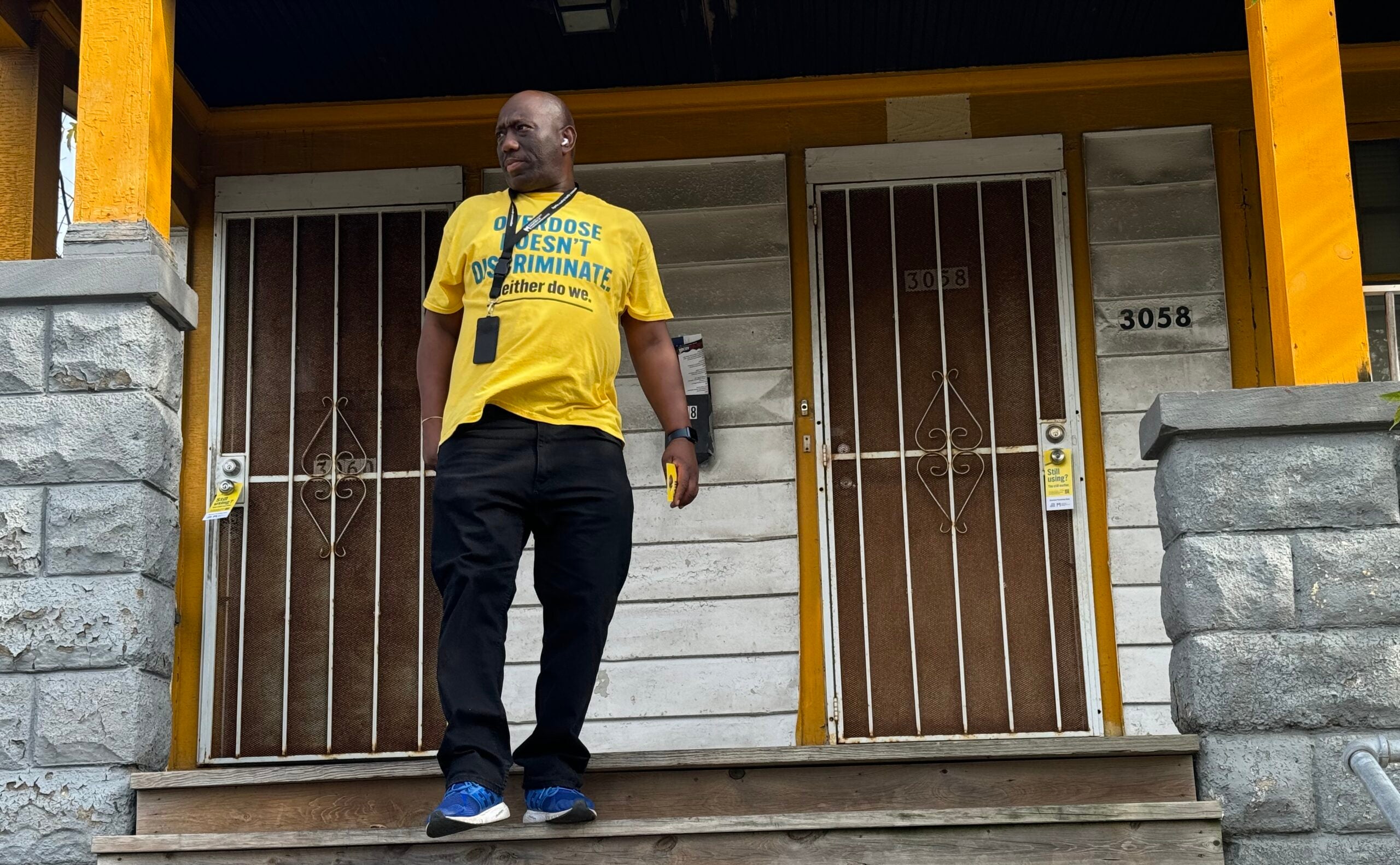Opioid overdose deaths are starting to decline in Wisconsin and across the country, with some crediting efforts to spread “harm reduction” tools to people with addiction.
Among those tools are Leave Behind kits, packets provided by firefighters and EMS workers who respond to 911 calls about overdoses.
The kits, which can contain Narcan and fentanyl test strips, along with information about addiction treatment resources, are being funded by grants from the Department of Health Services using money from the state’s opioid settlement funds.
News with a little more humanity
WPR’s “Wisconsin Today” newsletter keeps you connected to the state you love without feeling overwhelmed. No paywall. No agenda. No corporate filter.
After responding to a 911 overdose call, firefighters and paramedics can leave kits at the scene, and patient’s families and social networks would have life-saving anti-overdose drugs available if needed again.
According to DHS spokesperson Jennifer Miller, 21 local agencies accepted grant funding for local programs, with the state distributing a total of $572,159 for the kits. She said it was the first time DHS ran the program and departments first applied for this year’s funds in spring of 2023.
Kits help in the fight against opioid overdoses
Kevin Bonnell is a battalion chief for the EMS Bureau at North Shore Fire Rescue. The Milwaukee County department received $70,000 worth of kits, which arrived in October 2023.
“As far as need, there have been occurrences. I believe we’ve given out around 100 doses in that year’s time,” he said.
He said the kits allow people living with opioid users to give the life-saving drug before emergency medical services arrive.
“Absolutely, we still want to come to the scene. Most of the time, the Narcan itself is shorter-acting than the drugs that are out there in the illicit market,” Bonnell said.
He said users’ families often administer Narcan once before his department’s responders arrive and administer a second dose.
The Oak Creek Fire Department, also in Milwaukee County, was awarded $14,999 in Leave Behind kits by the state.
Its chief, Michael Kressuk, said the state grant allowed his department to roll out a Leave Behind Program for the first time. It partnered with the Oak Creek Health Department and rehab center Community Medical Services to launch what it calls Narcan Hope Kits.
“I think it’s like any other public safety issue, or problem, you address. There are preventive measures that you need to take to try to solve that problem,” Kressuk said. “You can always try to solve it on the back end by being reactionary, but being proactive provides a better outcome in the long run.”
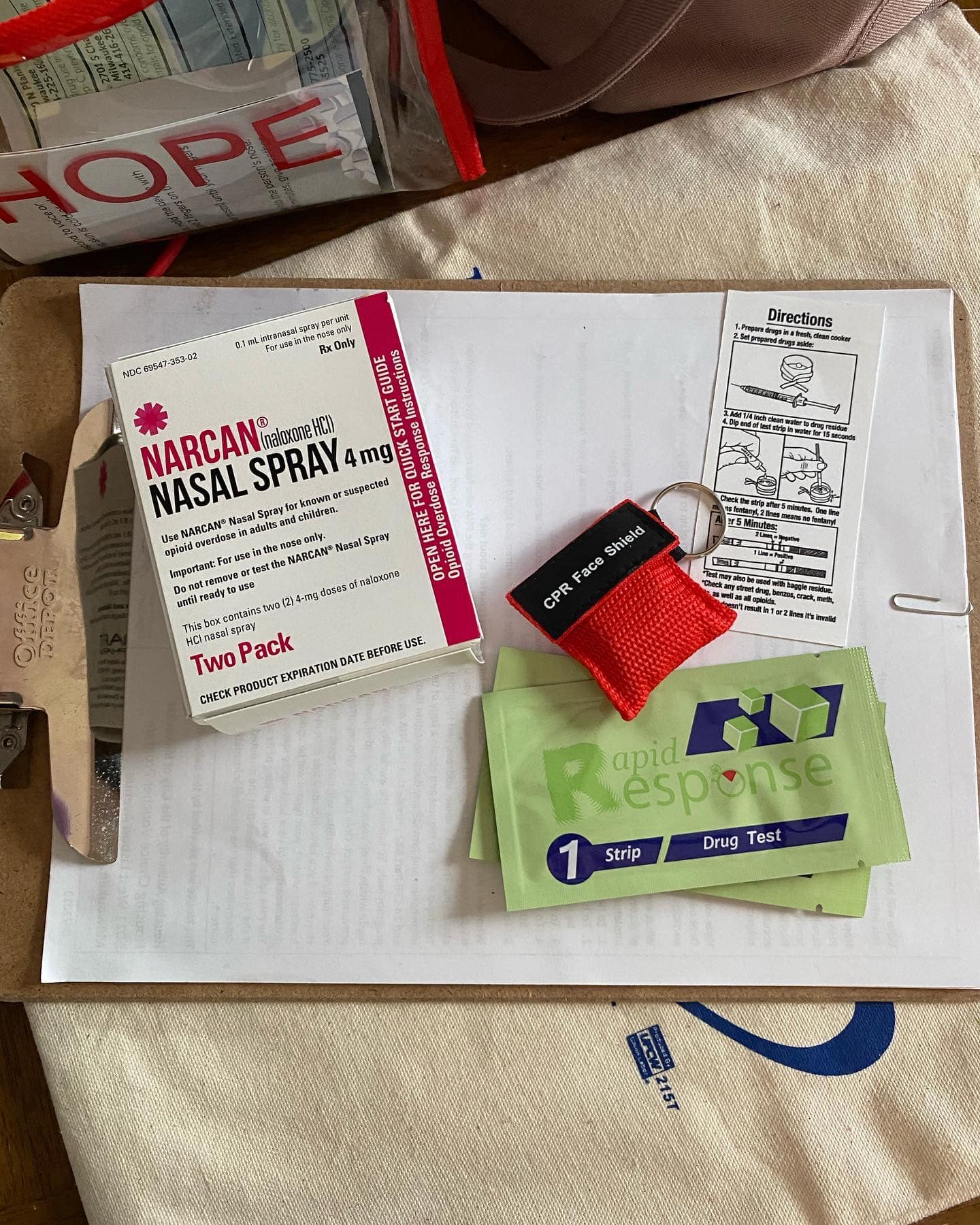
Harm reduction tools could be a factor in declining overdose deaths
According to data from the Centers for Disease Control and Prevention, drug overdose deaths across the United States began declining in September 2023, surprising some experts.
The CDC data is current through April 2024. In Wisconsin, the period from April 2023 to April 2024 saw 13 percent fewer overdose deaths than the previous 12 months.
The Wisconsin DHS keeps county-level data on ambulance runs that are likely opioid overdose-related. This data, too, shows a decline beginning last September, and current overdose ambulance runs far below 2023’s levels.
Milwaukee County has seen a smaller decline of 4 percent, according to its Chief Health Policy Advisor Ben Weston.
“Four percent is a small amount, but 4 percent is also the first decline we’ve seen in six years, since 2018. So it is a sign of better things to come,” Weston said.
He believes harm reduction methods — those that save overdosing user’s lives without directly helping recovery — could be behind this decline.
“Folks who die cannot recover. It seems obvious, but that’s what harm reduction is all about. Preventing death in that moment, preventing harm in that moment, and allowing the opportunity for what comes next,” he said.
Besides Narcan and fentanyl test strips, Leave Behind kits often include information about local addiction treatment resources.
Weston said that many Milwaukee County’s harm reduction kits — whether Leave Behind or in opioid settlement-funded vending machines — now include xylazine test strips as well.
The animal tranquilizer also known as “tranq” is increasingly found mixed into in street drugs. Test strips meant to detect the drug, which is resistant to Narcan because it is not an opioid, were decriminalized in Wisconsin earlier this year.
Wisconsin Public Radio, © Copyright 2025, Board of Regents of the University of Wisconsin System and Wisconsin Educational Communications Board.

